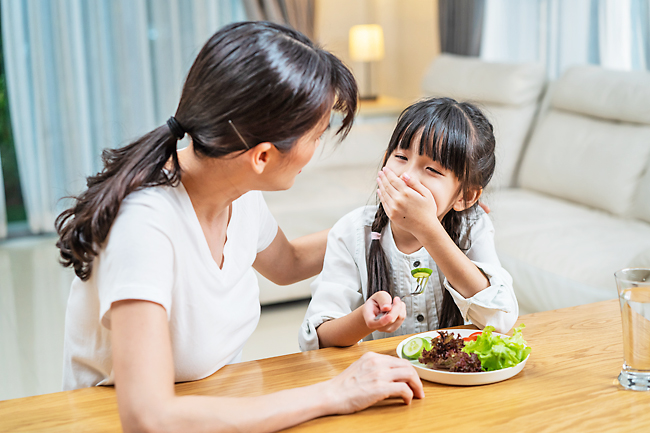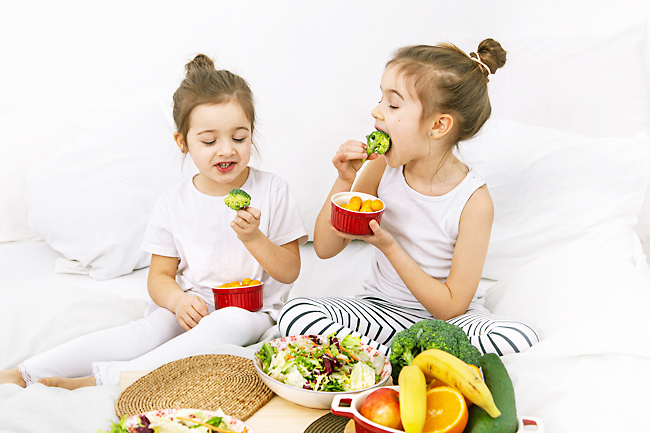Anna Nordberg
THE WASHINGTON POST – Picky eating is one of those challenges that’s practically guaranteed to make parents go bananas.
Not only is it frustrating to cook a healthy meal, have your child refuse it and then get into a battle of wills, but behind that frustration can be a real concern – is my child getting all the nutrients they need to grow and develop?
The peak years of picky eating are between ages two and six, as children start to want more autonomy.
“The two things you can’t make toddlers do – you can’t make them eat, and you can’t make them go to the bathroom on the potty,” said pediatric dietitian and founder of the Nourished Child Jill Castle, who is working on a book about nutrition and wellness for kids. “Toddlers want autonomy over their bodies.”
If you have a picky eater, Castle said, that means your child is moving through a typical developmental stage.
That’s why it’s important to take the nutritional long view. One meal, or 10, is not going to make or break your kid’s diet. And a balanced diet for a child may look a little different than you think.



The vast majority of picky eaters are still getting the nutrients they need, according to Castle.
“We know most kids are getting plenty of protein, unless they’re picky to an extreme,” said Castle, noting that many grains and dairy contain protein, not just meat. When she consults for picky eating, she looks at the entire week, or even two, for a nutritional overview.
SET THE EXAMPLE
Rethinking picky eating doesn’t mean giving up on healthy meals – it means accepting that not every attempt works out.
Parents should try to include healthy foods in their child’s diet every day and every meal, said primary care pediatrician at Boston Children’s Hospital, and an assistant professor of pediatrics at Harvard Medical School Claire McCarthy.
“Their child may or may not eat them, but the more they become normal and familiar, the more likely a child is to try them.” The earlier you start, the better.
Model the behaviour you want to see, McCarthy said. “If you’re not eating fruits and vegetables every day, your child will notice.”
KEEP IT SIMPLE
One rule Castle uses is to try to get some protein on the plate, and as many colours as you can. If your child doesn’t eat anything, that’s okay, just try again the next meal or snack. And if all else fails, she suggests making the food presentation as simple as possible. Put some bowls of raw carrots, grapes, cherries or whatever fruits and vegetables are on hand, on the table and (hopefully) watch them disappear.
“Kids may get suspicious when they can’t identify what’s in front of them,” Castle said. “Plain is really their wheelhouse. But it doesn’t have to be either/or – it can be simple food and more complex ones.”
NO BEGGING, BRIBING OR BADGERING
Perhaps the hardest thing for parents to learn is that the more you focus on what your child is eating, and try to cajole or bribe them to eat healthy food, the more oppositional they are likely to become. Try as much as you can to be neutral, Castle said.
“Picky eating is often less about the food and more about whether the child is enjoying coming to the table,” she said.
“If the table is just drudgery, pressure, and eating and behaviour critiques, it’s not going to be pleasant. A goal should be not to talk about food at the dinner table at all.”
Imagine going out to dinner with a friend who keeps commenting on your food – “Why aren’t you eating that? I don’t think you should have dessert because you didn’t finish your chicken. How about a couple more bites of broccoli?” You would go insane, and rightly so. Well, your kids probably feel the same way. While most kids will grow out of picky eating, harping on it constantly can make it continue into adulthood.
The opposite can also happen, explained Castle. Some children may want to conform and please their parents so much that they ignore their bodies or appetite and overeat. That’s why it’s all the more important for parents to give themselves a break as the food police and understand that for most kids, meeting their nutritional needs is often easier than we think.
Even if you’re cycling between the same five or so food a day, if your child is exposed to protein, grains, dairy or non-dairy substitutes, and fruits and veggies, that’s most likely adequate, Castle said. Just keep working on adding new food over time. (As always, there are outliers – if your child is not gaining weight or height or you have specific dietary questions, talk to your pediatrician).
TAKE THE PRESSURE OFF DINNER
Nutritionally speaking, dinner is hardly the end all be all. Most toddlers have already met their nutritional needs before dinner even rolls around, Castle said, especially if you offer healthy food like fruits and veggies throughout the day. And milk alone can often suffice as your child’s daily protein.
Instead, make dinner a time when the family comes together.
“When a child sees that their parents are enjoying the meal, that good conversation and food are flowing, they are going to want to be part of that,” Castle said.
And don’t be a short-order cook, McCarthy said. “If your child won’t eat the meal everyone else is eating, the alternative should be something healthy and boring – like unsweetened cereal with milk – not nuggets and fries.”
She also suggests involving the child in shopping or food prep and being smart about incentives. Offer fun activities – like reading a book, going for a walk, or choosing the next family movie or dinner menu – rather than bribing with dessert.
When you create a food hierarchy by bribing or banning, all it does is make the dessert more appealing and the healthy food less so. In other words: Take things in moderation.
When I step back, what I find comforting is the knowledge that I don’t have all that much control over my kids’ intrinsic likes and dislikes anyway. I have two children, and one eats oysters, king crab claws, squid and hot peppers. He is nine. My other one eats penne pasta, chicken nuggets, crackers, and bread. She is seven. They both came out of my body. I ate similar food in both pregnancies. I exposed them to the same food when they were babies and toddlers.
Bottom line: We probably have a lot less influence over what our kids eat than we think. And while it’s our job to provide healthy food for our children, it’s always going to be their job to eat it.




